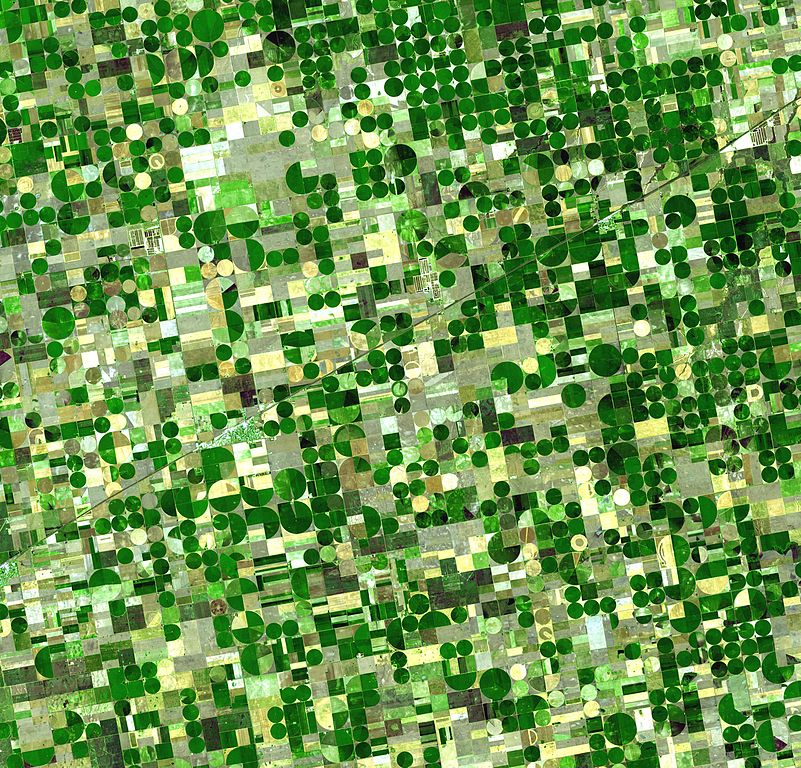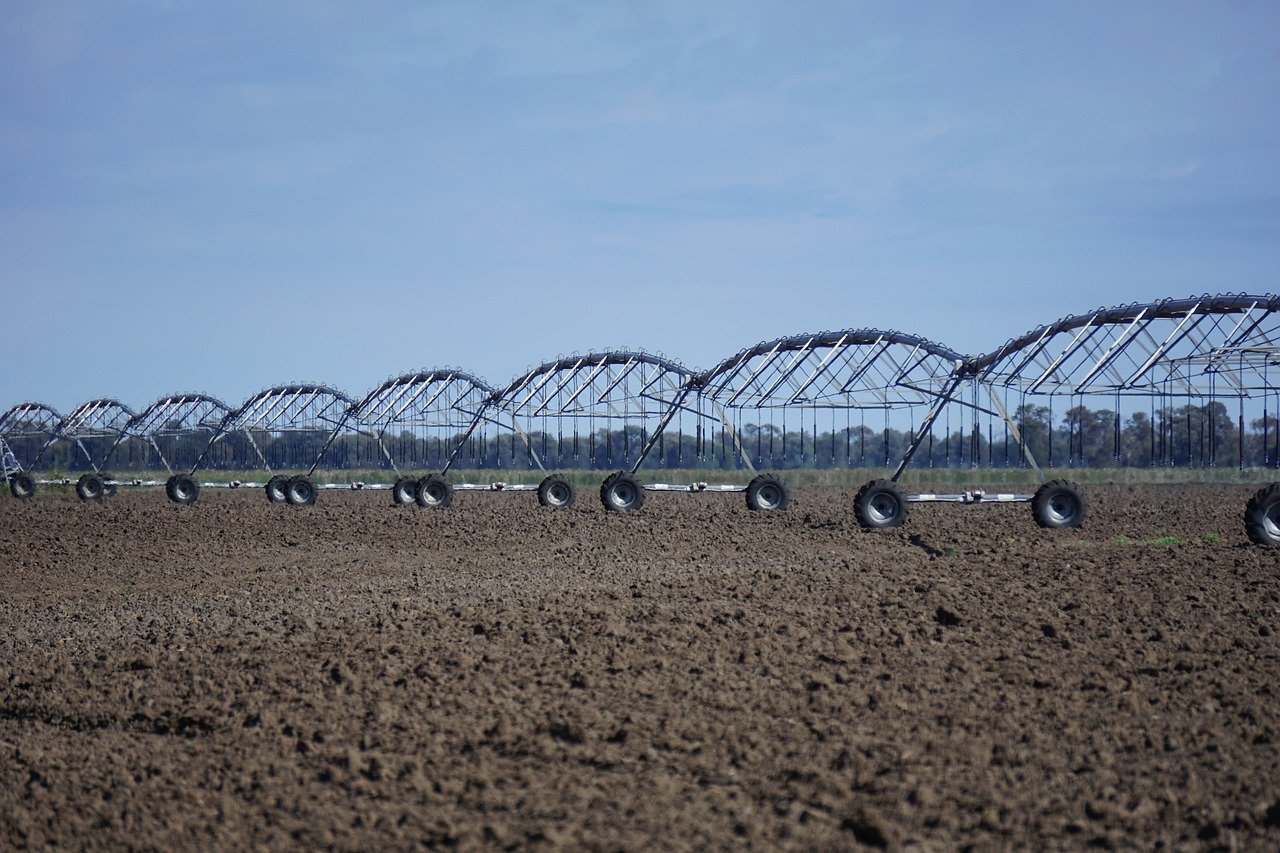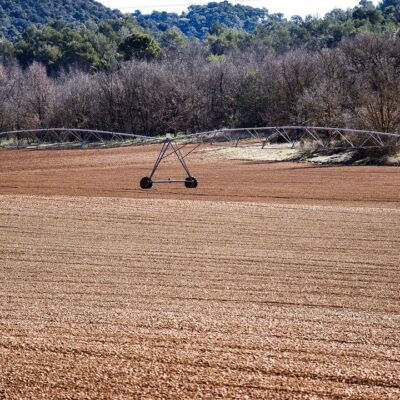Centre pivot irrigation systems were invented in the United States in the middle of the 20th century. At the time, they proved to be vastly superior to other traditional irrigation methods.
Centre Pivot Irrigation Definition
Centre pivot irrigation (sometimes referred to as water-wheel irrigation or circle irrigation) involves sprinklers that rotate and water crops in a circle around the central pivot.
They use considerably less water, but having said that, the energy used was significantly higher because of the way they worked.
The Main Benefits of Centre Pivot Irrigation
One of the main benefits of centre pivot irrigation, also known as lateral irrigation, was improved water management and the ability to apply water for irrigation purposes in which nutrient-rich chemicals were dissolved.
It resulted in the systems being adopted on a worldwide basis. However, towards the end of the 20th-century they were facing particular criticism regarding their mechanical sustainability and water and energy use efficiencies, particularly when they were first brought into use, as most were water-powered.
As time progressed, the use of water-power was replaced with hydraulics and electric motors. The beginning of the 21st-century saw the introduction of state-of-the-art precision irrigation systems. These new, advanced technologies were able to take into account such variables as plant irrigation needs, climatic conditions, soil variation, the topography of local terrain, and sprinkler pressure.
How a Centre Pivot Irrigation System Works
Centre pivot irrigation is a system designed to water crops in a circular pattern using a movable, swinging arm fitted to a central pivot. In essence, these systems comprised a radial pipe along which nozzles were pre-spaced to distribute water. As the arm rotates about its central pivot point, water is distributed through the nozzles to irrigate crops in a circular motion.
The design is such that the sprinklers closer to the pivot point, and which therefore cover less ground area, have a lesser water flow rate than nozzles spaced towards the end of the pipe, which require a significantly larger flow rate to cover a larger area of sweep.

Credit: Wiki Media Commons
The Perfect tools for Irrigating Large Areas of Agricultural Land
According to the length of the arm, a typical centre pivot irrigation system with a straight arm can irrigate plants over a 130-acre area (53 hectares), whereas a system with a corner or swing arm can irrigate surface areas of up to 155 acres (63 hectares). They are the perfect tools for the irrigation of large areas of farmland.
The Advantages of Centre Pivot Irrigation Systems
For large areas of agricultural land, a pivot system provides the most efficient form of irrigation. Not only can such a system deliver water over a huge area of ground in a limited period of time, but it also facilitates the distribution of fertilisers and pesticides. The advantages of these systems include:
- Apply irrigation in a uniform manner
- Reduce the need for human labour
- Operate at reduced pressures to conserve energy
- Prevent water run-off through more efficient water use
- Programmable to irrigate on a specific schedule
In any 24-hour period, a mobile centre pivot irrigation system can travel slowly on its wheels and complete a full circle. Its semi-automatic operation also means that it can be adjusted to only complete a part of a circle which is helpful when obstacles such as power lines are encountered.
A centre pivot irrigation system is suitable for nearly all crops, including things like arables, fruit trees, and vegetables. Thanks to its semi-automatic operation in terms of its pivots, and its lateral movements, it can help to regulate water levels in the soil. Depending on a specific installation, and the way a system is managed, it can be up to 80% efficient in terms of the efficient use of water.
The Disadvantages of Centre Pivot Irrigation Systems
Unfortunately, no machinery can be 100% efficient, and centre pivot irrigation systems also have their disadvantages. They include:
- High initial installation costs
- Cost of maintenance can be expensive
- Not best suited to irrigate fields which are rectangular or square in shape.
- Mobile systems can only perform on relatively flat ground.
- They struggle in windy conditions whereby uneven irrigation can take place, and nutrients and fertilisers can be lost.
In terms of the efficient use of water, centre pivot irrigation systems do unfortunately lose a lot of water through evaporation. Having said that, these systems are still the least expensive to use.
In order to keep the production costs of growing crops as low as possible, farmers need to make the best use of state-of-the-art agricultural technology. Centre pivot irrigation systems are able to supply many advantages that other types of irrigation systems cannot.
By helping with water management, enhancing irrigation efficiency, and contributing to farm productivity and profitability in general, centre pivot irrigation systems are a useful tool for today's modern farmer.


